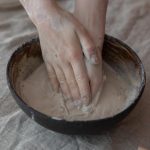Do you ever wonder how those pesky bubbles form in your fabrics? Understanding the process behind bubble formation in fabrics can help you maintain the quality of your clothing and textiles.
By delving into the factors that contribute to this phenomenon, you can take proactive measures to minimize bubble formation and preserve the integrity of your fabrics. From the composition of the fabric to the impact of detergents and water temperature, each element plays a crucial role in the development of bubbles.
This exploration will equip you with the knowledge needed to effectively address and prevent fabric bubbles, ensuring that your textiles remain in top condition.
Key Takeaways
- Fabric composition influences bubble formation in fabrics.
- Detergents affect the formation and stability of bubbles in fabrics.
- Chemical interaction between detergents and water impacts bubble formation.
- Water temperature plays a role in the formation and size of bubbles in fabrics.
Fabric Composition and Bubble Formation
Fabric composition significantly influences how bubbles form in fabrics. The tension within the fabric, determined by its composition, plays a crucial role in the size and distribution of bubbles. Different fabrics exhibit varying degrees of tension, affecting the formation of bubbles. For instance, fabrics with high tension tend to produce smaller, more densely distributed bubbles, while those with lower tension may result in larger, more sporadic bubbles.
Chemical bonding also contributes to bubble formation in fabrics. The way in which the fabric's fibers are bonded together impacts the fabric's ability to trap air and form bubbles. Fabrics with strong intermolecular bonding may have a higher propensity to retain air, leading to the formation of bubbles. On the other hand, fabrics with weaker bonding may allow air to escape more easily, resulting in fewer or smaller bubbles.
Understanding the relationship between fabric composition, tension, chemical bonding, and bubble formation is crucial for various applications, such as in textiles, manufacturing, and even medical settings. By studying these factors, researchers and engineers can develop fabrics with specific bubble properties tailored to diverse needs.
Impact of Detergents on Fabric Bubbles
When it comes to fabric bubbles, the impact of detergents is a crucial factor to consider. Detergents can affect the formation and stability of bubbles in fabrics due to their chemical interaction with the materials.
Understanding how detergents influence fabric bubbles can provide insights into maintaining the quality and longevity of various textiles.
Detergents and Fabric Bubbles
When washing your clothes, detergents play a key role in creating bubbles in the fabric. The type of detergent you select can significantly impact the formation and stability of bubbles during the washing process. Here's how detergents influence fabric bubbles:
- Surfactants: Detergents contain surfactants, which reduce the surface tension of water, allowing it to penetrate fabric more effectively and form bubbles.
- Bubble Size: The choice of detergent can affect the size of bubbles formed in the fabric, impacting the overall cleaning efficiency.
- Fabric Care: Certain detergents are formulated to be gentler on fabrics, resulting in fewer bubbles and reduced potential for damage to delicate clothing.
It's essential to consider the impact of detergents on fabric bubbles to ensure proper cleaning and fabric care.
Chemical Interaction and Bubbles
Choosing the right detergent affects not only the formation of bubbles but also their interaction with the fabric during the washing process. When detergents come into contact with the fabric surface, they can alter the surface tension and affect the size and stability of the bubbles formed during washing.
Some detergents contain surfactants that lower the surface tension of water, allowing it to penetrate the fabric more effectively and release trapped dirt. This interaction between the detergent, fabric, and water can lead to the formation of bubbles.
Additionally, the type and concentration of the detergent used can impact the size of the bubbles formed. Detergents with higher concentrations of surfactants may produce larger bubbles, which can potentially affect the cleaning efficiency and fabric care during the washing process.
Bubble Stability in Detergents
To understand the impact of detergents on fabric bubbles, consider the stability of bubbles during the washing process. The stability of fabric bubbles is influenced by the interplay of bubble size and surface tension. When detergents are introduced into the washing machine, they affect the surface tension of the water, which in turn impacts the stability of the bubbles formed.
Here are the key factors to consider:
- Bubble Size: Detergents can influence the size of bubbles formed in fabrics during washing, affecting their stability.
- Surface Tension: Detergents alter the surface tension of water, potentially leading to changes in the stability of fabric bubbles.
- Detergent Formulation: Different detergents may interact with fabric bubbles in distinct ways, impacting their stability.
Understanding how detergents affect fabric bubbles is essential for maintaining the quality of fabrics during the washing process.
The Role of Water Temperature in Bubble Formation
When you wash your fabrics, the water temperature plays a crucial role in bubble formation. Higher water temperatures tend to increase the number of bubbles that form in the fabric.
Conversely, using cold water can reduce the formation of bubbles during the washing process.
Water Temperature Affects Bubbles
By adjusting the water temperature, you can directly influence the formation of bubbles in fabrics. The temperature of the water plays a crucial role in determining the size and quantity of bubbles that form during the fabric washing process.
Here's how water temperature affects bubbles:
- Heat Increases Bubble Size: Warmer water temperatures generally lead to larger bubbles forming in fabrics.
- Cold Water Reduces Bubble Formation: Using cold water can minimize the formation of bubbles, especially in fabrics with delicate textures.
- Moderate Temperature for Balanced Results: A moderate water temperature can help achieve a balanced bubble formation, suitable for most fabric types.
Understanding the impact of water temperature on bubble formation is essential for maintaining the quality and longevity of your fabrics.
Cold Water Reduces Bubbles
Using cold water reduces the formation of bubbles in fabrics, providing a gentle washing method for delicate textures. Cold water helps to minimize the agitation and friction that can lead to the formation of bubbles, making it an ideal choice for maintaining the quality of your garments. By adjusting the water temperature when washing your clothes, you can ensure that the fabrics are cared for properly. Below is a table summarizing the effects of water temperature on bubble formation:
| Water Temperature | Effect on Bubbles |
|---|---|
| Hot | Increases |
| Warm | Moderate |
| Cold | Reduces |
Mechanical Agitation and Bubble Development
You can create bubbles in fabrics by manually agitating the material, causing air to become trapped within the fibers. This mechanical agitation plays a crucial role in bubble formation and is influenced by textile mechanics. When you subject the fabric to physical manipulation, such as rubbing, shaking, or stirring, the resulting friction generates air pockets within the fabric's structure.
The dynamics of these bubbles are intricately linked to the fabric's properties and the intensity of the agitation. Fabric agitation intricately influences bubble dynamics, contributing to the formation of bubbles within the material. Understanding the interplay between bubble formation and textile mechanics is essential for comprehending the behavior of bubbles in fabrics. The type of fabric and the nature of the mechanical agitation significantly impact the development and stability of bubbles within the material.
Mechanical agitation serves as a pivotal factor in the creation of bubbles within fabrics, influencing their size, distribution, and longevity. This process is fundamental to comprehending the behavior and characteristics of bubbles in textiles.
Understanding Fabric Friction and Bubbles
To understand the relationship between fabric friction and bubble formation, examine the influence of surface interactions on bubble dynamics within the material. Friction effects play a significant role in the formation of bubbles in fabrics. When fabrics rub against each other or other surfaces during wear or laundering, the friction generated can trap air between the fibers, leading to the formation of bubbles.
Understanding these friction effects is crucial for proper fabric care. Excessive friction can cause an increase in bubble formation, which may lead to fabric damage over time. Therefore, it's important to consider fabric friction when selecting cleaning methods and detergents to minimize bubble formation and preserve the fabric's integrity.
When considering fabric care, it's essential to be mindful of the potential impact of friction on bubble formation. Gentle washing and avoiding excessive rubbing or agitation can help reduce friction and minimize the formation of bubbles in the fabric. Additionally, selecting detergents specifically formulated for delicate fabrics can further mitigate the effects of friction and help maintain the fabric's quality.
Preventive Measures to Minimize Fabric Bubbles
Implementing proper washing techniques and selecting suitable detergents can effectively minimize fabric bubbles, ensuring the longevity of your fabrics. To prevent fabric bubbles and maintain the quality of your textiles, consider the following preventive measures:
- Gentle Washing: Use a delicate or gentle cycle when washing fabrics to reduce friction and minimize the formation of bubbles. Avoid using harsh agitation, as it can cause excessive wear and tear on the fabric, leading to the development of bubbles.
- Avoid Overloading: Overloading the washing machine can increase friction between fabrics, leading to the formation of bubbles. Ensure that there's enough room for the fabrics to move freely during the washing process, reducing the likelihood of bubbles forming.
- Proper Detergent Selection: Choose a mild, fabric-friendly detergent specifically formulated for delicate fabrics. Harsh detergents can cause damage to the fibers, making the fabric more prone to developing bubbles. Opt for detergents designed for bubble reduction and fabric care to maintain the integrity of your textiles.
Frequently Asked Questions
Can Bubbles in Fabrics Cause Any Harm to the Fabric or to the Wearer?
Bubbles in fabrics can cause potential harm if left unaddressed. To prevent damage, ensure proper care when washing and drying. Use gentle detergents, avoid high heat, and air dry when possible. Regular maintenance can help preserve the fabric and protect the wearer.
Are There Any Specific Types of Fabrics That Are More Prone to Developing Bubbles?
Certain types of fabrics, such as delicate knits or synthetic blends, are more prone to developing bubbles. To prevent this, consider using gentle washing techniques and avoiding excessive friction during wear and care.
Can Fabric Bubbles Be a Sign of Poor Quality or Construction in the Fabric?
Fabric bubbles can indeed be a sign of poor quality or construction in the fabric. They can indicate inferior materials or inadequate weaving, leading to weakness and susceptibility to damage. It's important to inspect fabric construction closely.
Do Certain Types of Washing Machines or Drying Methods Contribute to the Formation of Fabric Bubbles?
When washing fabrics, using eco-friendly prevention methods and natural remedies can help maintain fabric quality. Certain washing machines and drying methods can contribute to fabric bubbles, so paying attention to fabric care is important.
Are There Any Natural or Eco-Friendly Methods for Preventing Fabric Bubbles, Without Relying on Commercial Detergents or Fabric Softeners?
To prevent fabric bubbles without commercial products, consider eco-friendly prevention. Try natural remedies or homemade solutions. Alternative methods, like using vinegar as a fabric softener, can help maintain fabric quality and reduce the formation of bubbles.
- How Does Ring Spun Cotton Affect Garment Fit and Shape Retention? - August 13, 2024
- What Are the Challenges in Producing Ring Spun Cotton? - August 13, 2024
- Is Ring Spun Cotton Suitable for Plus-Size Clothing? - August 13, 2024





